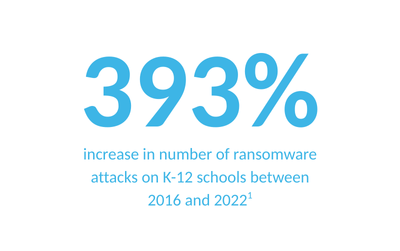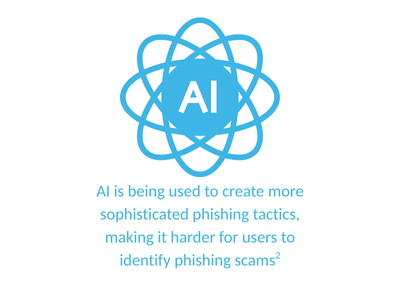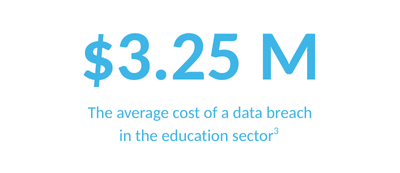Cybercriminals are Targeting Education – Here’s How Schools Can Stay Secure
Michael O’Connell, Senior Security Solutions Architect
Cyberattacks continue to wreak havoc across industries, but in recent years, the education sector has been hit particularly hard. According to findings from K12 Security Information eXchange (K12 SIX), the number of disclosed cyber incidents in schools in the U.S. averages out to a rate of more than one per school day. More alarmingly, evidence suggests the number of undisclosed cyber incidents is 10 to 20 times higher than the number of those disclosed.
Why Is Education a Prime Target for Cybercriminals?
Educational institutions store vast amounts of sensitive data, including student records, financial information, and intellectual property. However, they often operate with limited cybersecurity resources, making them attractive targets for cybercriminals. The rise of remote and hybrid learning environments has also expanded the attack surface, providing hackers with more opportunities to exploit vulnerabilities.
Key Cyber Threats Facing Schools
Ransomware Attacks: Cybercriminals continue to deploy ransomware to encrypt school systems and demand payment for decryption keys. The downtime caused by such attacks can disrupt learning and administrative operations.

Phishing and Social Engineering: Students, faculty, and staff are frequently targeted with phishing emails that trick them into divulging credentials or downloading malware.

Data Breaches: Hackers exploit weak authentication methods to gain unauthorized access to school databases, stealing sensitive information such as grades, medical records, and financial data.

How Schools Can Strengthen Their Cybersecurity Posture
As these attacks grow in number and sophistication, the need for better cybersecurity measures has never been more pressing. These alarming statistics emphasize the importance of taking proactive measures to protect systems and data.
However, the reality is that many educational institutions still lack these vital defenses. Cybersecurity budgets in education are often limited, making it difficult to keep up with evolving threats. For this reason, partnerships with third-party cybersecurity providers or managed detection and response services can play a critical role in defending against cyberattacks.
Here are some key strategies Aspire recommends:
- Regular Cybersecurity Training: Educate staff and students so they can recognize phishing attempts. Practicing good cyber hygiene can significantly reduce human error-related breaches.
- Managed Detection and Response: Implementing a comprehensive MDR or MXDR services ensures continuous monitoring, rapid threat detection, and expert analysis to swiftly address potential security breaches and minimize damage.
- Implement Zero Trust Security: Adopt a Zero Trust framework to ensure that access is continuously verified, reducing the risk of unauthorized intrusions. Do this by implementing Multi-Factor Authentication (MFA), managing network access with VPN, and keeping your infrastructure up to date.
- Cloud Backup and Recovery Solutions: Regularly back up critical data and develop a comprehensive incident response plan to help minimize the impact of cyberattacks.
Aspire’s Commitment to Cybersecurity in Education
At Aspire, we specialize in providing cybersecurity solutions tailored to the unique needs of our customers. Our team of security experts’ partners with schools to assess their vulnerabilities, implement cutting-edge security technologies, and develop a robust cybersecurity strategy. Contact us today to assess your school’s security posture and implement strategies that keep your data and operations safe.
Stay ahead of the threats—because every day should be a school day for learning, not for cybercriminals.
#
Sources:
1 https://www.f3law.com/insights/ransomware-series-part-i-school-district-cyber-attacks-on-the-rise-102jv16/
2 https://www.forbes.com/councils/forbestechcouncil/2023/05/26/how-ai-is-changing-social-engineering-forever/
3 https://www.ibm.com/reports/data-breach


